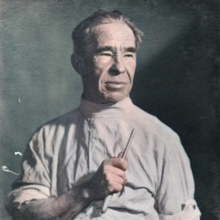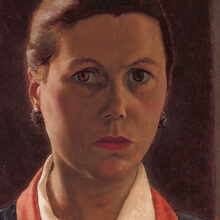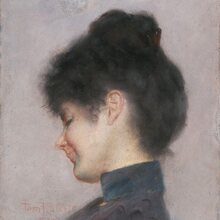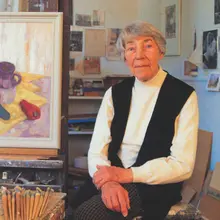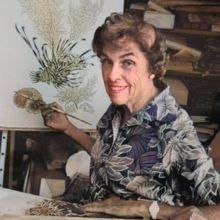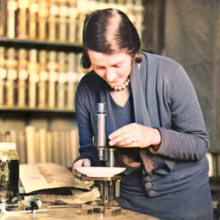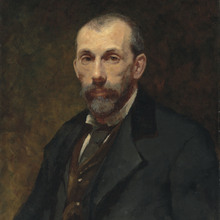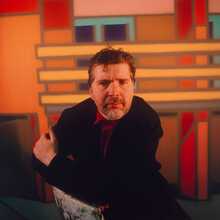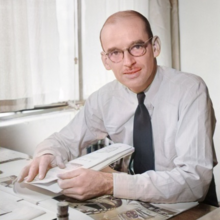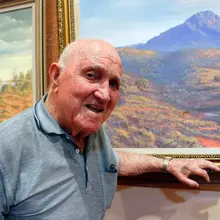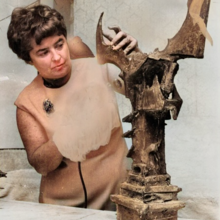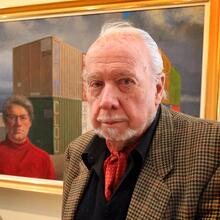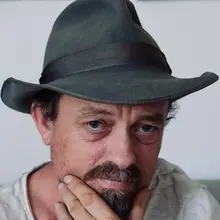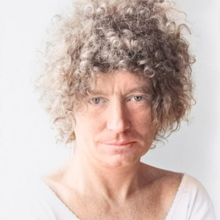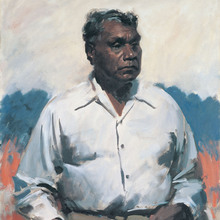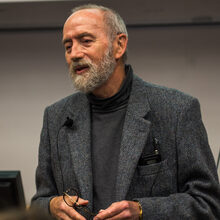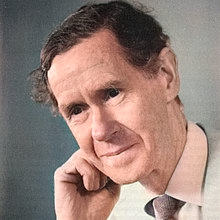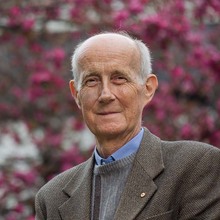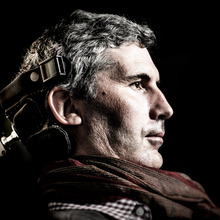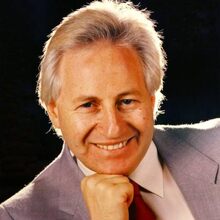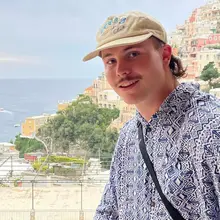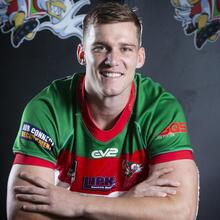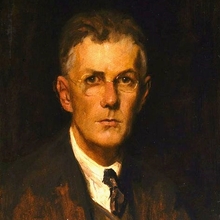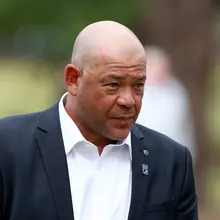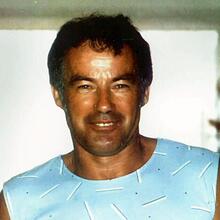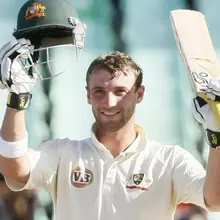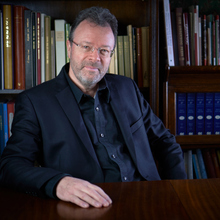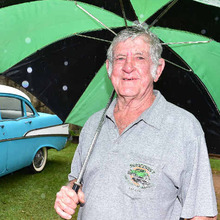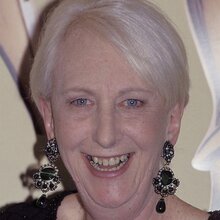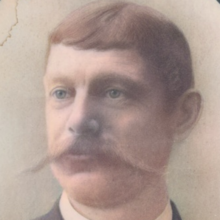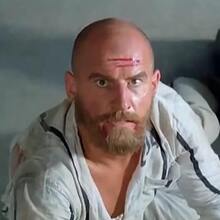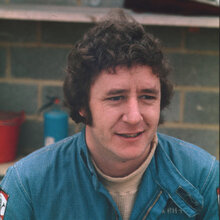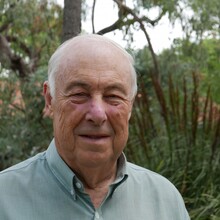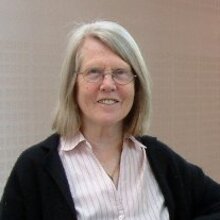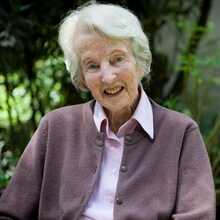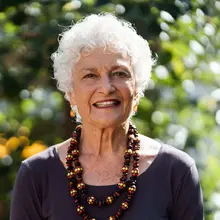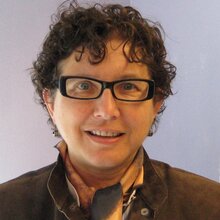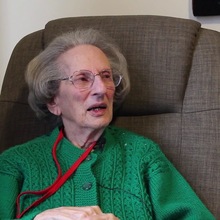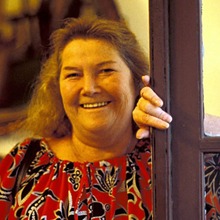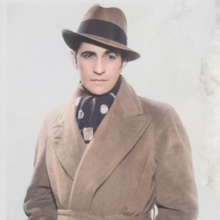 Louis Abrahams
1852 - 1903
Tobacconist and art patron
Louis Abrahams
1852 - 1903
Tobacconist and art patron
 Jack Absalom
1927 - 2019
Painter, author, adventurer
Jack Absalom
1927 - 2019
Painter, author, adventurer
 Annie Jean Macnamara
1899 - 1968
Medical doctor and scientist on poliomyelitis
Annie Jean Macnamara
1899 - 1968
Medical doctor and scientist on poliomyelitis
 Ned Kelly
1854 - 1880
Bushranger, outlaw, gang leader
Ned Kelly
1854 - 1880
Bushranger, outlaw, gang leader
 David Gulpilil
1953 - 2021
Playing a principal role in Walkabout
David Gulpilil
1953 - 2021
Playing a principal role in Walkabout
 Justin Yerbury
1974 - 2023
Professor in Neurodegenerative Disease
Justin Yerbury
1974 - 2023
Professor in Neurodegenerative Disease
 Joy McKean
1930 - 2023
Country music singer and manager of Slim Dusty
Joy McKean
1930 - 2023
Country music singer and manager of Slim Dusty
 Geoffrey Edelsten
1943 - 2021
Founder of Allied Medical Group and former
Geoffrey Edelsten
1943 - 2021
Founder of Allied Medical Group and former
 William Leslie Bowles
1885 - 1954
Sculptor and medallist for Australian Memorial
William Leslie Bowles
1885 - 1954
Sculptor and medallist for Australian Memorial
 Patrick White
1912 - 1990
Writing novels that explore the human condition
Patrick White
1912 - 1990
Writing novels that explore the human condition
 Harold Edward Elliott
1878 - 1931
Brigadier General and Senator for Victoria
Harold Edward Elliott
1878 - 1931
Brigadier General and Senator for Victoria
 Rod Taylor
1930 - 2015
Actor of film and television
Rod Taylor
1930 - 2015
Actor of film and television
 Elizabeth Kenny
1880 - 1952
Nurse and physiotherapist
Elizabeth Kenny
1880 - 1952
Nurse and physiotherapist
 Jeffrey Smart
1921 - 2013
Urban landscape painter
Jeffrey Smart
1921 - 2013
Urban landscape painter
 Zelda D'Aprano
1928 - 2018
feminist activist and unionist
Zelda D'Aprano
1928 - 2018
feminist activist and unionist
 Janet Seidel
1955 - 2017
Jazz vocalist and pianist
Janet Seidel
1955 - 2017
Jazz vocalist and pianist
 Olive Ashworth
1915 - 2000
Graphic designer and industrial designer
Olive Ashworth
1915 - 2000
Graphic designer and industrial designer
 Con Colleano
1899 - 1973
Tightrope walker and circus performer
Con Colleano
1899 - 1973
Tightrope walker and circus performer
 Albert Namatjira
1902 - 1959
Watercolour landscape painter
Albert Namatjira
1902 - 1959
Watercolour landscape painter
 Ned Kelly
1854 - 1880
Bushranger, outlaw, gang leader and convicted
Ned Kelly
1854 - 1880
Bushranger, outlaw, gang leader and convicted
 Renee Geyer
1953 - 2023
actress in A Country Practice
Renee Geyer
1953 - 2023
actress in A Country Practice
 Arthur Boyd
1920 - 1999
Painter and art teacher
Arthur Boyd
1920 - 1999
Painter and art teacher
 Ann Woolcock
1937 - 2001
Respiratory physician and scientist
Ann Woolcock
1937 - 2001
Respiratory physician and scientist
 Weng Zhanqiu
1900 - 1945
Painter and writer
Weng Zhanqiu
1900 - 1945
Painter and writer
 Bruce Edward Hobbs
1936 - 2014
Structural geologist and science administrator
Bruce Edward Hobbs
1936 - 2014
Structural geologist and science administrator
 Bert Newton
1938 - 2021
Television personality and presenter
Bert Newton
1938 - 2021
Television personality and presenter
 Brad Drewett
1958 - 2013
Tennis player and ATP executive chairman
Brad Drewett
1958 - 2013
Tennis player and ATP executive chairman
 Dorothy Hill
1907 - 1997
Geologist, palaeontologist
Dorothy Hill
1907 - 1997
Geologist, palaeontologist
 Fiona Stanley
1946 - 2020
Epidemiologist and public health researcher
Fiona Stanley
1946 - 2020
Epidemiologist and public health researcher
 Nick Cave
1957 - 2021
musician, writer, and actor
Nick Cave
1957 - 2021
musician, writer, and actor
 Bob Christo
1938 - 2011
Actor in Hindi films
Bob Christo
1938 - 2011
Actor in Hindi films
 Howard John Arkley
1951 - 1999
Graphic designer and artist
Howard John Arkley
1951 - 1999
Graphic designer and artist
 Michael Falzon
1972 - 2020
Musical theatre star and actor
Michael Falzon
1972 - 2020
Musical theatre star and actor
 Howard Walter Florey
1898 - 1968
Pharmacologist and pathologist who isolated
Howard Walter Florey
1898 - 1968
Pharmacologist and pathologist who isolated
 Peter Chanel
1803 - 1841
Catholic priest, missionary, and martyr
Peter Chanel
1803 - 1841
Catholic priest, missionary, and martyr
 Will Ashton
1881 - 1963
Painter and art critic
Will Ashton
1881 - 1963
Painter and art critic
 Gordon Andrews
1914 - 2001
Graphic designer and industrial designer
Gordon Andrews
1914 - 2001
Graphic designer and industrial designer
 Herbert Cole Nugget Coombs
1906 - 1997
First Governor of the Reserve Bank of Australia
Herbert Cole Nugget Coombs
1906 - 1997
First Governor of the Reserve Bank of Australia
 Kimberley Kitching
1970 - 2022
Politician, lawyer, trade unionist
Kimberley Kitching
1970 - 2022
Politician, lawyer, trade unionist
 Edith Cowan
1861 - 1932
Social reformer and politician
Edith Cowan
1861 - 1932
Social reformer and politician
 Florence Turner Blake
1873 - 1959
Water-colour paintings on silk fans
Florence Turner Blake
1873 - 1959
Water-colour paintings on silk fans
 Liam Hampson
1998 - 2020
Rugby league player for Redcliffe Dolphins
Liam Hampson
1998 - 2020
Rugby league player for Redcliffe Dolphins
 Dame Nellie Melba
1861 - 1931
operatic lyric coloratura soprano
Dame Nellie Melba
1861 - 1931
operatic lyric coloratura soprano
 Chrissy Amphlett
1959 - 2013
Singer and songwriter of Divinyls
Chrissy Amphlett
1959 - 2013
Singer and songwriter of Divinyls
 Judith Durham
1943 - 2022
Lead singer of The Seekers
Judith Durham
1943 - 2022
Lead singer of The Seekers
 Germaine Greer
1939 - 2021
writer and public intellectual
Germaine Greer
1939 - 2021
writer and public intellectual
 John Job Crew Bradfield
1867 - 1943
Chief engineer of Sydney Harbour Bridge
John Job Crew Bradfield
1867 - 1943
Chief engineer of Sydney Harbour Bridge
 Stella Bowen
1893 - 1947
Impressionist painter and war artist
Stella Bowen
1893 - 1947
Impressionist painter and war artist
 John Gorton
1911 - 2002
Prime Minister of Australia and lawyer
John Gorton
1911 - 2002
Prime Minister of Australia and lawyer
 Sir Grafton Elliot Smith
1871 - 1937
Anatomy, Egyptology, and hyperdiffusionism
Sir Grafton Elliot Smith
1871 - 1937
Anatomy, Egyptology, and hyperdiffusionism
 Ashley Cooper
1936 - 2020
Tennis player
Ashley Cooper
1936 - 2020
Tennis player
 Raymond Arthur Dart
1893 - 1988
Discoverer of Australopithecus africanus
Raymond Arthur Dart
1893 - 1988
Discoverer of Australopithecus africanus
 Ernest Buckmaster
1897 - 1968
Painter and art teacher
Ernest Buckmaster
1897 - 1968
Painter and art teacher
 Bob Hawke
1929 - 2019
Prime minister of Australia and president
Bob Hawke
1929 - 2019
Prime minister of Australia and president
 Gordon Piper
1932 - 2004
Actor, theatre director, scriptwriter and comedian
Gordon Piper
1932 - 2004
Actor, theatre director, scriptwriter and comedian
 Dieter Brummer
1976 - 2021
Soap opera star
Dieter Brummer
1976 - 2021
Soap opera star
 Sir Frank Macfarlane Burnet
1899 - 1985
Nobel laureate in Physiology or Medicine
Sir Frank Macfarlane Burnet
1899 - 1985
Nobel laureate in Physiology or Medicine
 Charles Tran Van Lam
1913 - 2001
Diplomat
Charles Tran Van Lam
1913 - 2001
Diplomat
 Phillip Hughes
1988 - 2014
Test and ODI cricketer for Australia
Phillip Hughes
1988 - 2014
Test and ODI cricketer for Australia
 Sheikh Maktoum bin Rashid Al Maktoum
1943 - 2006
first and third prime minister of the United Arab
Sheikh Maktoum bin Rashid Al Maktoum
1943 - 2006
first and third prime minister of the United Arab
 Louisa Lawson
1848 - 1920
poet, publisher, and suffragist
Louisa Lawson
1848 - 1920
poet, publisher, and suffragist
 Betty Cuthbert
1938 - 2017
Olympic champion
Betty Cuthbert
1938 - 2017
Olympic champion
 Rod Marsh
1947 - 2022
Wicketkeeper
Rod Marsh
1947 - 2022
Wicketkeeper
 John Bromwich
1918 - 1999
Tennis player, winner
John Bromwich
1918 - 1999
Tennis player, winner
 Steve Irwin
1962 - 2006
wildlife conservationist, television personal
Steve Irwin
1962 - 2006
wildlife conservationist, television personal
 Marcus Laurence Elwin Mark Oliphant
1901 - 2000
First experimental demonstration of nuclear fusion
Marcus Laurence Elwin Mark Oliphant
1901 - 2000
First experimental demonstration of nuclear fusion
 Samuel Alexander
1859 - 1938
Metaphysics, philosophy of religion
Samuel Alexander
1859 - 1938
Metaphysics, philosophy of religion
 Michael Solomon Gudinski
1952 - 2021
record executive and promoter
Michael Solomon Gudinski
1952 - 2021
record executive and promoter
 Ronald Ernest Aitchison
1921 - 1996
Physicist and electronics engineer
Ronald Ernest Aitchison
1921 - 1996
Physicist and electronics engineer
 Frank Kingsley Norris
1954 - 2019
Composer and conductor
Frank Kingsley Norris
1954 - 2019
Composer and conductor
 Helen Reddy
1941 - 2020
Singer and activist
Helen Reddy
1941 - 2020
Singer and activist
 Ellis Rowan
1848 - 1922
Artist and botanical illustrator
Ellis Rowan
1848 - 1922
Artist and botanical illustrator
 Rasul Amin
1939 - 2009
Politician, Scholar
Rasul Amin
1939 - 2009
Politician, Scholar
 Norman Brookes
1877 - 1968
Tennis player
Norman Brookes
1877 - 1968
Tennis player
 Heath Ledger
1979 - 2008
Actor and director
Heath Ledger
1979 - 2008
Actor and director
 Tony McMichael
1942 - 2014
Professor in Neurodegenerative Disease
Tony McMichael
1942 - 2014
Professor in Neurodegenerative Disease
 Ross Higgins
1931 - 2016
Ted Bullpitt in Kingswood Country
Ross Higgins
1931 - 2016
Ted Bullpitt in Kingswood Country
 Bill Gammage
1945 - 2019
Historian and author of The Biggest Estate
Bill Gammage
1945 - 2019
Historian and author of The Biggest Estate
 Frank Moorhouse
1938 - 2022
Writer and essayist
Frank Moorhouse
1938 - 2022
Writer and essayist
 Earle Page
1880 - 1961
Prime Minister of Australia and leader
Earle Page
1880 - 1961
Prime Minister of Australia and leader
 John Leslie Mackie
1917 - 1981
philosophy of religion, philosophy of language
John Leslie Mackie
1917 - 1981
philosophy of religion, philosophy of language
 Jack Charles
1943 - 2022
Actor, musician, activist, Aboriginal elder
Jack Charles
1943 - 2022
Actor, musician, activist, Aboriginal elder
 Brian McGuire
1945 - 1977
Racing driver and constructor
Brian McGuire
1945 - 1977
Racing driver and constructor
 Adrian Quist
1913 - 1991
Tennis player
Adrian Quist
1913 - 1991
Tennis player
 Colleen McCullough
1937 - 2015
Historical novelist and author of The Thorn Birds
Colleen McCullough
1937 - 2015
Historical novelist and author of The Thorn Birds
 Ivan Milat
1944 - 2019
Serial killer who murdered seven backpackers
Ivan Milat
1944 - 2019
Serial killer who murdered seven backpackers
 Ruby Violet Payne-Scott
1912 - 1981
Radio astronomer and radio physicist
Ruby Violet Payne-Scott
1912 - 1981
Radio astronomer and radio physicist
 Harrie Massey
1908 - 1983
Physicist and electronics engineer
Harrie Massey
1908 - 1983
Physicist and electronics engineer
 Merle Mitchell
1934 - 2021
Community worker and former ACOSS president
Merle Mitchell
1934 - 2021
Community worker and former ACOSS president
 Maxine Klibingaitis
1964 - 2023
Bobbie Mitchell in Prisoner and Terri Inglis
Maxine Klibingaitis
1964 - 2023
Bobbie Mitchell in Prisoner and Terri Inglis
 Peter Keaston Reith
1950 - 2022
former deputy leader of the Liberal Party
Peter Keaston Reith
1950 - 2022
former deputy leader of the Liberal Party
 Peter Harvey
1944 - 2013
Journalist and broadcaster for the Nine Network
Peter Harvey
1944 - 2013
Journalist and broadcaster for the Nine Network
 Jason Benjamin
1971 - 2021
Painter
Jason Benjamin
1971 - 2021
Painter
 John Monash
1865 - 1931
Civil engineer and military commander
John Monash
1865 - 1931
Civil engineer and military commander
 Kerr Grant
1908 - 1983
Physicist and electronics engineer
Kerr Grant
1908 - 1983
Physicist and electronics engineer
 Eleanor Dodson
1928 - 2020
Crystallographer and developer
Eleanor Dodson
1928 - 2020
Crystallographer and developer
 Sir John Warcup Kappa Cornforth
1917 - 2013
Chemist who won the Nobel Prize in Chemistry
Sir John Warcup Kappa Cornforth
1917 - 2013
Chemist who won the Nobel Prize in Chemistry
 Lorrae Desmond
1929 - 2021
actress
Lorrae Desmond
1929 - 2021
actress
 Clive James
1939 - 2019
Writing literary criticism, television reviews
Clive James
1939 - 2019
Writing literary criticism, television reviews
 Lew Hoad
1934 - 1994
tennis player
Lew Hoad
1934 - 1994
tennis player
 Peter Thomson
1929 - 2018
Golfer, course architect, writer
Peter Thomson
1929 - 2018
Golfer, course architect, writer
 Anita Aarons
1912 - 2000
Artist, jeweller, teacher, critic
Anita Aarons
1912 - 2000
Artist, jeweller, teacher, critic
 Archie Roach
1956 - 2022
Singer-songwriter and Aboriginal activist
Archie Roach
1956 - 2022
Singer-songwriter and Aboriginal activist
 Peter Sculthorpe
1929 - 2014
Composer of orchestral, chamber, vocal
Peter Sculthorpe
1929 - 2014
Composer of orchestral, chamber, vocal
 Robert Gordon Menzies
1894 - 1978
Prime Minister of Australia and founder
Robert Gordon Menzies
1894 - 1978
Prime Minister of Australia and founder
 James Muir Auld
1879 - 1942
Painter and illustrator
James Muir Auld
1879 - 1942
Painter and illustrator
 Douglas Shenton Annand
1903 - 1976
Graphic designer and artist
Douglas Shenton Annand
1903 - 1976
Graphic designer and artist
 Sidney Nolan
1917 - 1992
Urban landscape painter
Sidney Nolan
1917 - 1992
Urban landscape painter
 Roy James Cameron
1923 - 2006
Statistician and diplomat
Roy James Cameron
1923 - 2006
Statistician and diplomat
 Jean Appleton
1911 - 2003
Graphic designer and industrial designer
Jean Appleton
1911 - 2003
Graphic designer and industrial designer
 Donald George Bradman
1908 - 2001
Batsman and captain of the Australian cricket team
Donald George Bradman
1908 - 2001
Batsman and captain of the Australian cricket team
 John Meillon
1934 - 1989
Character actor and voice-over artist
John Meillon
1934 - 1989
Character actor and voice-over artist
 Paul Dear
1966 - 2022
Australian rules footballer
Paul Dear
1966 - 2022
Australian rules footballer
 George Elton Mayo
1880 - 1949
Psychologist and sociologist
George Elton Mayo
1880 - 1949
Psychologist and sociologist
 Neville Henry Cayley
1854 - 1903
Artist and ornithologist
Neville Henry Cayley
1854 - 1903
Artist and ornithologist
 Errol Flynn
1909 - 1959
known for his romantic swashbuckler roles
Errol Flynn
1909 - 1959
known for his romantic swashbuckler roles
 Neil Hamilton Fairley
1891 - 1966
Medical researcher and army officer
Neil Hamilton Fairley
1891 - 1966
Medical researcher and army officer
 Shane Warne
1969 - 2022
Cricket legend and leg spin bowler
Shane Warne
1969 - 2022
Cricket legend and leg spin bowler
 Peggy van Praagh
1910 - 1990
Ballet dancer and director
Peggy van Praagh
1910 - 1990
Ballet dancer and director
 Roy Burston
1888 - 1960
Director General of Medical Services
Roy Burston
1888 - 1960
Director General of Medical Services
 Alfred Deakin
1856 - 1919
Prime minister of Australia, leader
Alfred Deakin
1856 - 1919
Prime minister of Australia, leader
 Bill Ponsford
1900 - 1991
Tennis player, former world
Bill Ponsford
1900 - 1991
Tennis player, former world
 Sir John Carew Eccles
1903 - 1997
Developing the Edman degradation method for
Sir John Carew Eccles
1903 - 1997
Developing the Edman degradation method for
 Malcolm Fraser
1930 - 1945
Prime Minister of Australia
Malcolm Fraser
1930 - 1945
Prime Minister of Australia
 Mae Dahlberg
1888 - 1969
Vaudeville performer and actress
Mae Dahlberg
1888 - 1969
Vaudeville performer and actress
 Ruby Rich
1888 - 1988
journalist, editor, and feminist
Ruby Rich
1888 - 1988
journalist, editor, and feminist
 Peter Allen
1944 - 1992
singer-songwriter, musician, and entertainer
Peter Allen
1944 - 1992
singer-songwriter, musician, and entertainer
 Barrington Pheloung
1954 - 2019
Composer and conductor
Barrington Pheloung
1954 - 2019
Composer and conductor
 Paul Gregory Green
1973 - 2022
Rugby league player and coach
Paul Gregory Green
1973 - 2022
Rugby league player and coach
 Jean Bellette
1908 - 1991
Painter and art teacher
Jean Bellette
1908 - 1991
Painter and art teacher
 Frank Fenner
1914 - 2010
Virology
Frank Fenner
1914 - 2010
Virology
 Belinda Emmett
1974 - 2006
Actress and singer, best known for her roles
Belinda Emmett
1974 - 2006
Actress and singer, best known for her roles
 Ronald Newbold Bracewell
1921 - 2007
Lewis M. Terman Professor
Ronald Newbold Bracewell
1921 - 2007
Lewis M. Terman Professor
 Bob Maguire
1934 - 2023
Catholic priest and community worker
Bob Maguire
1934 - 2023
Catholic priest and community worker
 Noel Tovey
1934 - 2019
Dancer, actor, mentor, director
Noel Tovey
1934 - 2019
Dancer, actor, mentor, director
 Walter Wilson Froggatt
1858 - 1937
Entomologist and author of Australian Insects
Walter Wilson Froggatt
1858 - 1937
Entomologist and author of Australian Insects
 Joan Lindsay
1896 - 1984
Novelist and painter who wrote Picnic
Joan Lindsay
1896 - 1984
Novelist and painter who wrote Picnic
 Andrew Fisher
1856 - 1919
Prime minister of Australia, leader
Andrew Fisher
1856 - 1919
Prime minister of Australia, leader
 Andrew Symonds
1975 - 2022
Test and ODI cricketer for Australia
Andrew Symonds
1975 - 2022
Test and ODI cricketer for Australia
 Rolf Harris
1930 - 2023
Musician, painter, actor television personality
Rolf Harris
1930 - 2023
Musician, painter, actor television personality
 Slim Dusty
1927 - 2003
Country music singer-songwriter, guitarist
Slim Dusty
1927 - 2003
Country music singer-songwriter, guitarist
 Frank Cameron Jackson
1943 - 2020
Philosophy of mind, epistemology, metaphysics
Frank Cameron Jackson
1943 - 2020
Philosophy of mind, epistemology, metaphysics
 Ruth Cracknell
1925 - 2002
comic actress and comedienne
Ruth Cracknell
1925 - 2002
comic actress and comedienne
 Vere Gordon Childe
1892 - 1957
Archaeologist and philologist
Vere Gordon Childe
1892 - 1957
Archaeologist and philologist
 Greedy Smith
1956 - 2019
Vocalist, keyboardist, harmonicist and songwriter
Greedy Smith
1956 - 2019
Vocalist, keyboardist, harmonicist and songwriter
 Mitch Cronin
1992 - 2020
Rugby league player for Wynnum Manly Seagulls
Mitch Cronin
1992 - 2020
Rugby league player for Wynnum Manly Seagulls
 Kate Jennings
1948 - 2021
Writer and feminist activist
Kate Jennings
1948 - 2021
Writer and feminist activist
 Harold Holt
1908 - 1967
Prime Minister of Australia and lawyer
Harold Holt
1908 - 1967
Prime Minister of Australia and lawyer
 Johnny Raper
1939 - 2022
Rugby league player and coach
Johnny Raper
1939 - 2022
Rugby league player and coach
 Herbert Edward Badham
1899 - 1961
Realist painter and art teacher
Herbert Edward Badham
1899 - 1961
Realist painter and art teacher
We Need -- admin in

